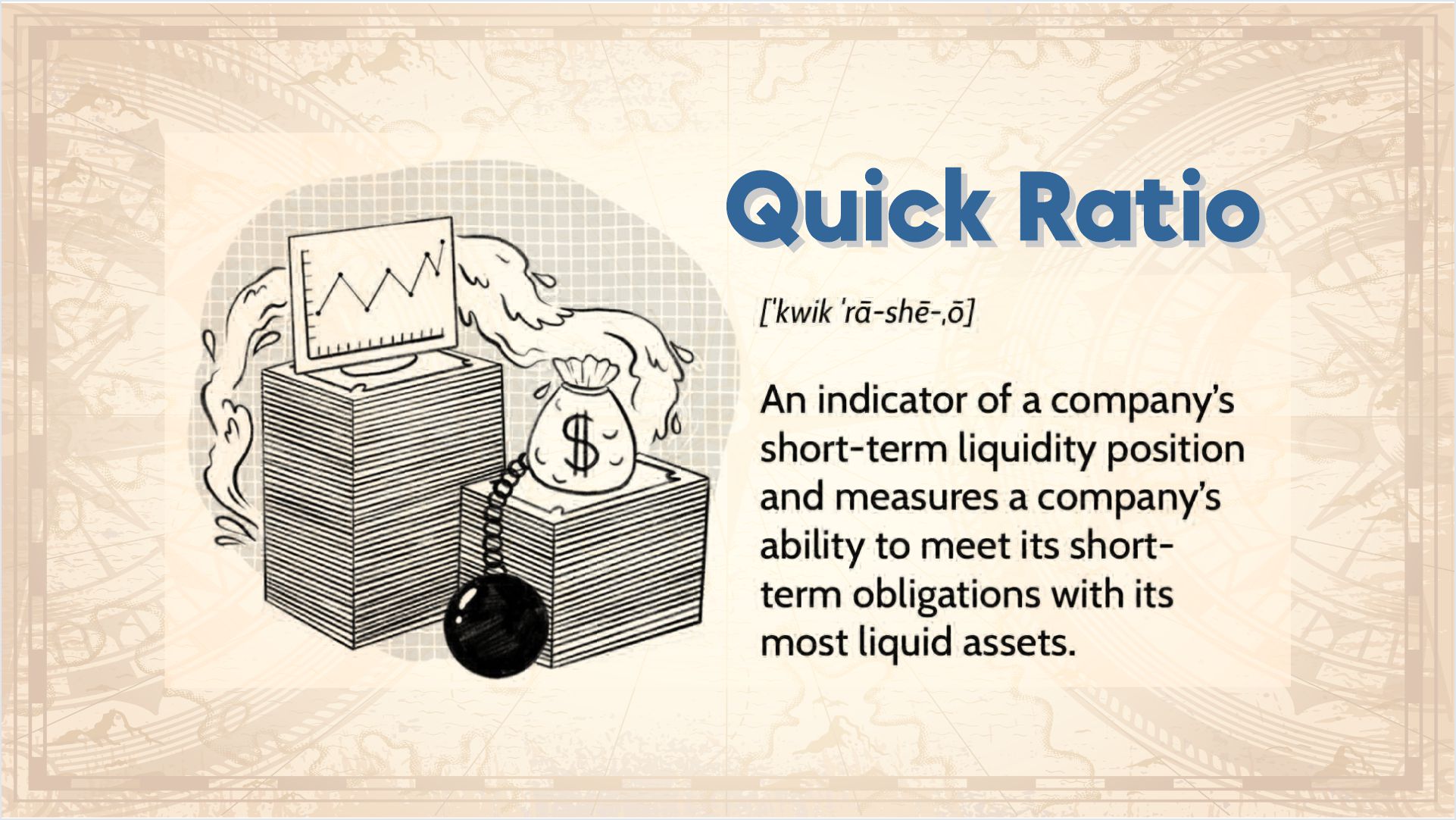Introduction:
In the fast-paced world of finance, where agility can be the key to survival, the Quick Ratio emerges as a vital metric for businesses assessing their short-term liquidity. Often referred to as the Acid-Test Ratio, this financial indicator provides a sharper focus on a company’s ability to meet immediate obligations. Join us as we unravel the significance of the Quick Ratio and explore how this metric can be a valuable compass for businesses navigating the currents of financial stability.
Defining the Quick Ratio:
The Quick Ratio is a liquidity ratio that measures a company’s ability to cover its short-term liabilities with its most liquid assets, excluding inventory. It is calculated by dividing quick assets by current liabilities:
Quick Ratio=Quick Assets/Current Liabilities
Quick assets typically include cash, marketable securities, and accounts receivable—assets that can be quickly converted into cash.
The Significance of the Quick Ratio:
Focused Liquidity Assessment:
While similar to the Current Ratio, the Quick Ratio hones in on the most liquid assets. By excluding inventory, it provides a more focused assessment of a company’s immediate liquidity.
Rapid Obligation Coverage:
The Quick Ratio is a measure of a company’s ability to swiftly cover its short-term liabilities. This becomes crucial in situations where businesses need to settle obligations promptly.
Strategic Financial Planning:
For companies with inventory that may take time to convert to cash, the Quick Ratio is a strategic tool. It helps identify potential liquidity challenges that might not be immediately apparent when using the Current Ratio.
Risk Mitigation:
Investors and creditors use the Quick Ratio to gauge the risk associated with a company’s short-term financial health. A higher ratio indicates a lower risk of default on immediate obligations.
Interpreting the Quick Ratio:
Benchmarking Against Industry Standards:
Different industries may have distinct requirements for liquidity. Comparing a company’s Quick Ratio to the industry average provides context and helps assess whether the company is adequately positioned.
Maintaining an Optimal Ratio:
An optimal Quick Ratio varies by industry, but generally, a ratio of 1 or higher is considered favorable. A ratio significantly lower than 1 may suggest potential difficulties in meeting short-term obligations.
Dynamic Analysis Over Time:
Monitoring the Quick Ratio over time is essential for businesses. Consistent decline may signal evolving liquidity challenges, while a steady or improving ratio indicates effective financial management.
Conclusion:
In the intricate world of financial analysis, the Quick Ratio emerges as a swift and focused tool, enabling businesses to assess and enhance their short-term liquidity. By shining a spotlight on the most liquid assets, this metric provides a clear view of a company’s ability to navigate immediate financial obligations.
As businesses strive for financial resilience, integrating the Quick Ratio into financial analyses empowers them to make nimble and informed decisions. Embracing the strategic value of the Quick Ratio positions businesses to not only weather immediate financial storms but also to thrive in the ever-changing landscape of finance.
